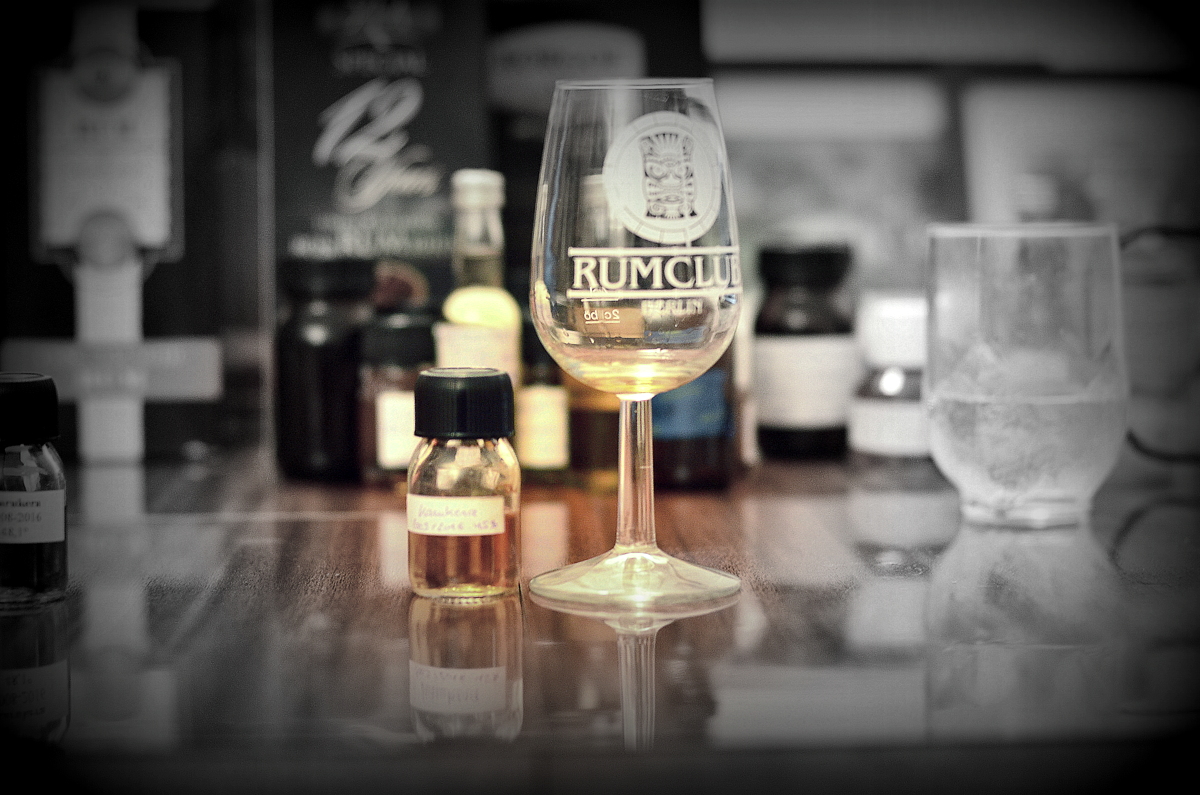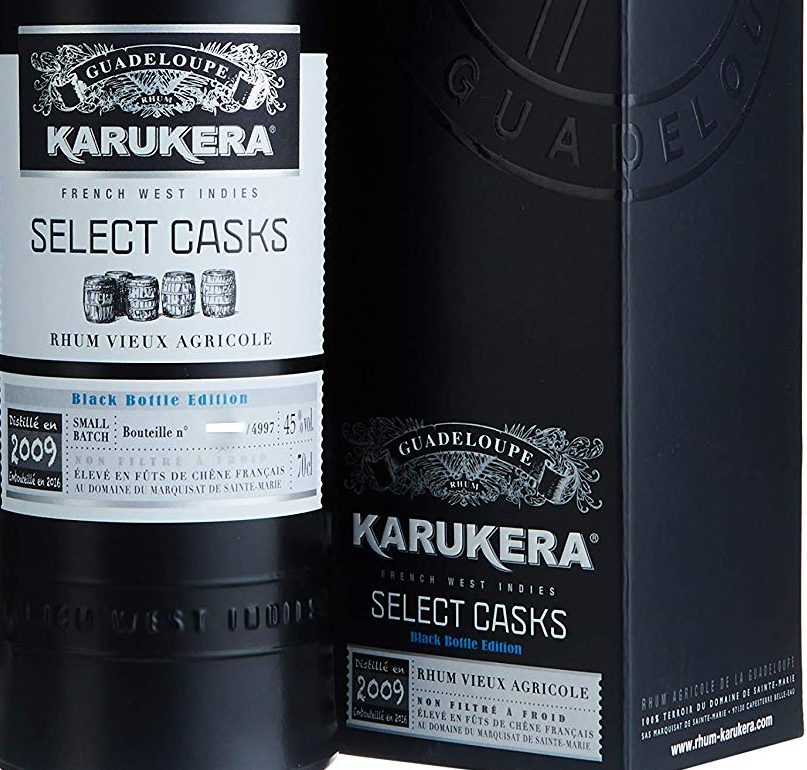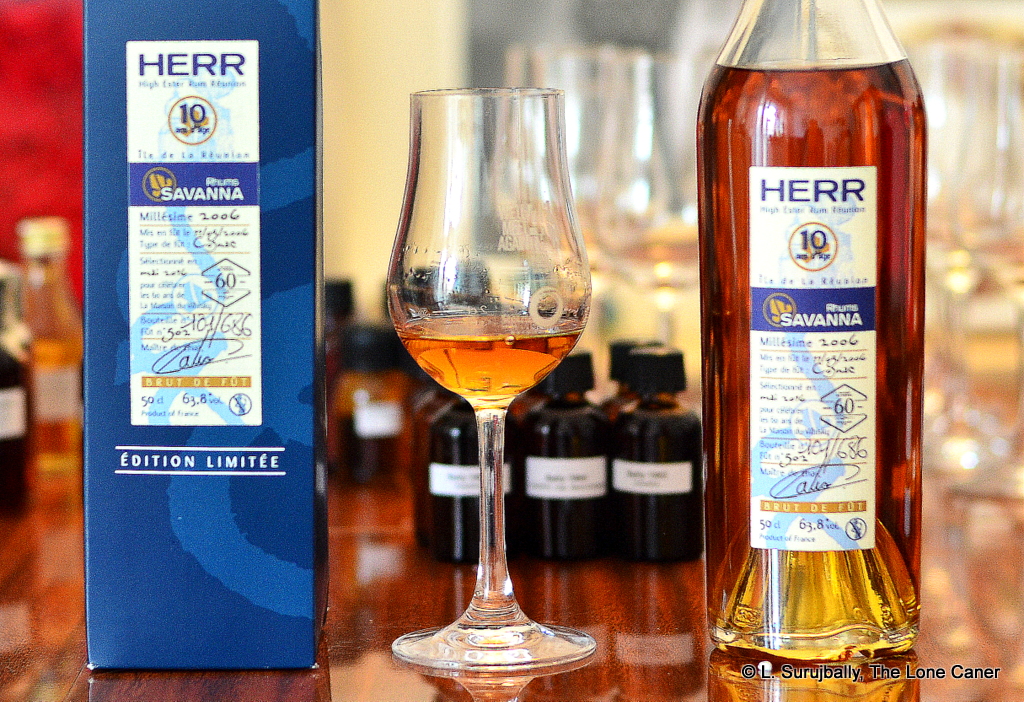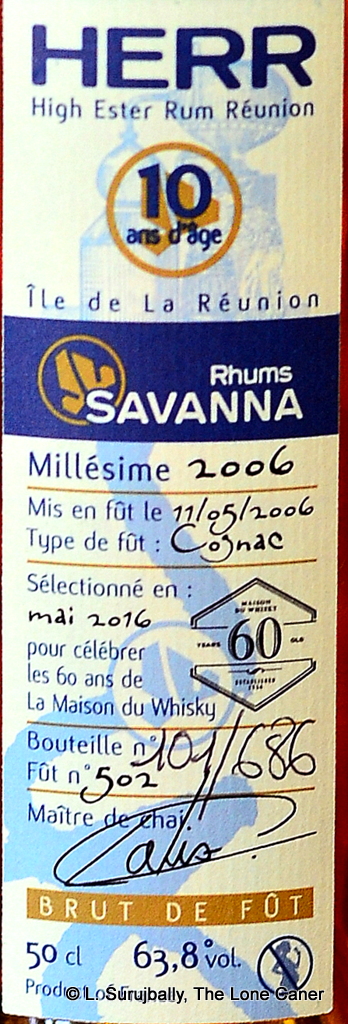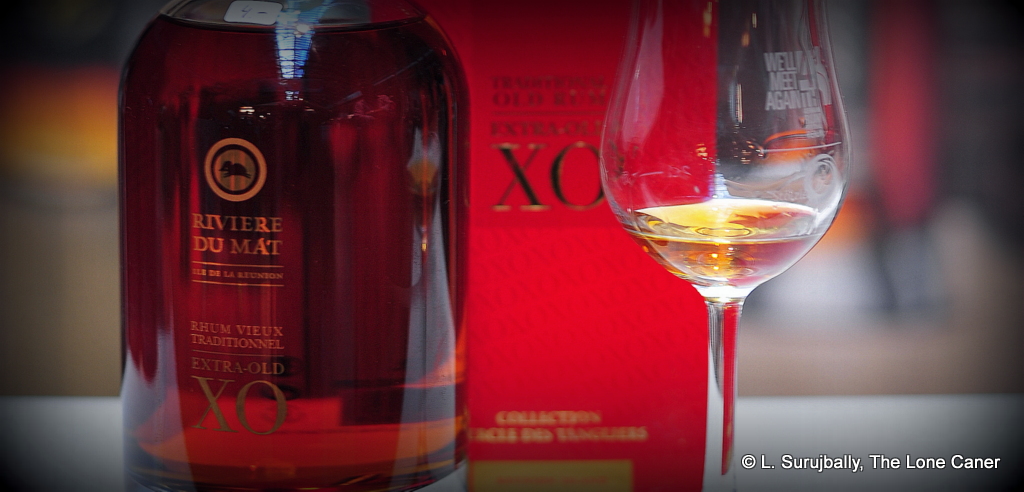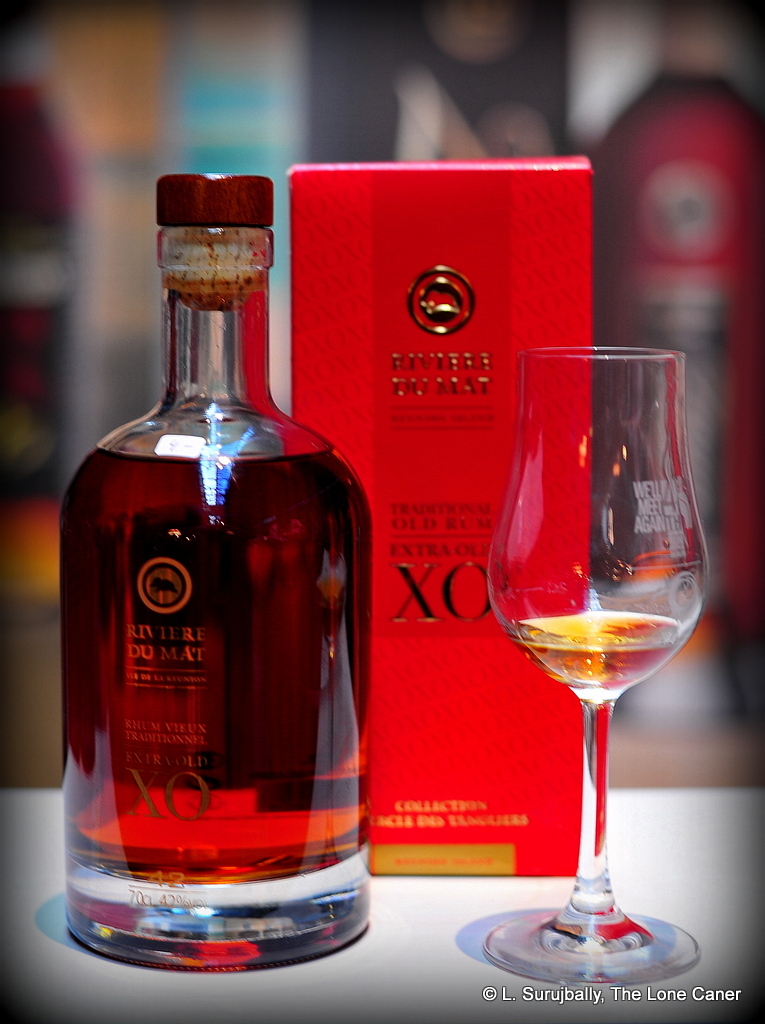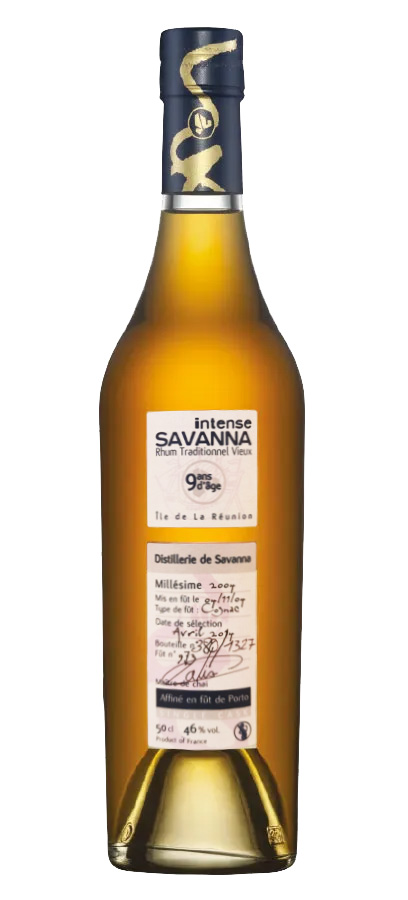 It’s about time to clear up a backlog of older tasting notes that have been shoved to the back by newer and more exciting releases, and so for the next few weeks we’ll try to push some reviews of older expressions out the door. Today we’re going to go back and look at Savanna, that Reunion based distillery which has had a fair amount of good press over the last five years, though perhaps more remaining more popular and well known in Europe than the Americas.
It’s about time to clear up a backlog of older tasting notes that have been shoved to the back by newer and more exciting releases, and so for the next few weeks we’ll try to push some reviews of older expressions out the door. Today we’re going to go back and look at Savanna, that Reunion based distillery which has had a fair amount of good press over the last five years, though perhaps more remaining more popular and well known in Europe than the Americas.
What distinguishes Savanna is the range of what they make. Many distilleries have ranges that are steps of the quality ladder: some have lightly aged and filtered white rums, and cheaper mass-market blends made for mixing, for the budget-minded cost-conscious proles. The next rung would be rums aged up to maybe five or six years, costing a bit more but still affordable to most, moving slightly away from the cocktail circuit without entirely entering the sipping area. Once they get to double figures, say 10-15 years or so, it’s getting premiumised and more to have without mixing, and after 18 years, say, it’s entering rarefied territory. Around this price point are also found special editions, millesimes, limited blends, single barrel releases, commemoratives and other fancy releases that go north of three figures easy. These days secondary maturations or finishes are pretty much found on all levels (except the unaged whites for obvious reasons).
Savanna stands out in that it makes rums from both molasses and cane juice, instantly doubling the potential variety it makes. Just to keep all the permutations clear is probably why they have all those names for their rums: the “Intense” series are molasses-based and relatively low on esters, hence their being named “starter rums;” the “Lontans” (also called grand arôme rums) which are also from molasses but with longer fermentations and with a high resultant ester count; there are also the “Créol” rhums which are straightforward rhum agricoles, made from fresh sugar cane juice; and the “Métis” rums which are a blend of traditionnelle and agricole. Millesimes, fancy finishes and special editions at all strengths pepper their output as well.
From the above, then, you can get a clear picture of what this rums is: a molasses based low-ester blended rum, laid to rest in 2004, aged for 9 years in ex-cognac casks and then finished in a porto cask, released at 46%. These days that’s the spec for a really decent rum, but in 2014 when this came out, they called it a starter, which shows something of how much the world has moved on, and may be why so few reviews of it exist out there.
Compared to some of the other Savanna rums tried in this lineup, the nose of this 46% rum presents as nuttier and slightly fruitier (strawberries, mild pineapple, cherries); there is a light aroma of acetones and nail polish wafting around and it’s very tart and pleasant…though I’m not sure I could pick it out of a lineup if tried blind. After some time we have caramel and blancmange and toffee, swiss bonbons, vanilla, and a strong Irish coffee (used to love those as a young man). There is a dry wine-y note in the background, and some slightly bitter tannics reminiscent of pencil sharpener leftovers, none of it particularly excessive, more like a soft exclamation point to the main thrust of the nose.
The palate is somewhat of a letdown: I’ve been whinging about the mild inoffensive anonymity of 40% rums lately, so it’s surprising to find a rum six points higher providing so little character on its own account. It’s light, watery and sharp and none too impressive. Honey, nuts, dry pastries, toffee oatmeal cookies – it’s like a breakfast cereal with some extras thrown in. A bit salty and creamy here and there as the tasting goes on, with red grapes, pancakes, caramel, light molasses and some coffee grounds making their appearance, and they all vanish quickly in a short, sharp finish made exceptional only by its brevity.
Overall, this is something of a disappointment, coming as it does from a distillery which makes some really impressive drams. Overall, one must concede that it’s not completely delinquent in taste – it does have aspects that are well done, and the assembly is decent: you will get a reasonable sip out of it. It’s just there isn’t enough on stage for the €90 it goes for, it’s all quite simple and light… and one is left with the question of whether this is a poor man’s sipper or an indifferent high-end rum that got made too fast and issued too early. The fact that Savanna ended up releasing several 12 YO editions from the 2004 distillery outturn (including a grand arome I thought was superlative) suggests the latter may hit closer to the mark.
(#1057)(80/100) ⭐⭐⭐
Other notes
- This is part of a collection of Savanna rhums Nico Rumlover sent me some time ago when he heard I was interested, long enough back for him to conceivably have forgotten he did so. Well, whether he remembers or not, I’m immensely grateful for the time he took to crate me a great selection of what the distillery can do.
- There are several 2004 Porto Finish single barrel editions out there: I have found two Lontans from different barrels, one eight and one nine years old, this 9YO Intense and a couple of 12YO editions. I’m sure there a few others.
- Distilled April 2004, aged 9 years; outturn 1327 bottles. Initially I supposedly the notation of the barrel number (#973) was what it was aged in, but observed there was also a 2004 12YO which also has cask #973 marked on it and that one has an outturn of 1480 bottles. Facebook netizen Jizeus Christ Guitare set me straight by informing me this was the number of the Porto cask, which makes more sense, as it could reasonably be used multiple times. Given the outturn one wonders whether it’s a port pipe or other large cask.
- For further reading on Savanna, I wrote a too-brief historical backgrounder on the distillery, here. A more recent visit to Reunion with a tour of the distillery was described by Rum Revelations in 2022.
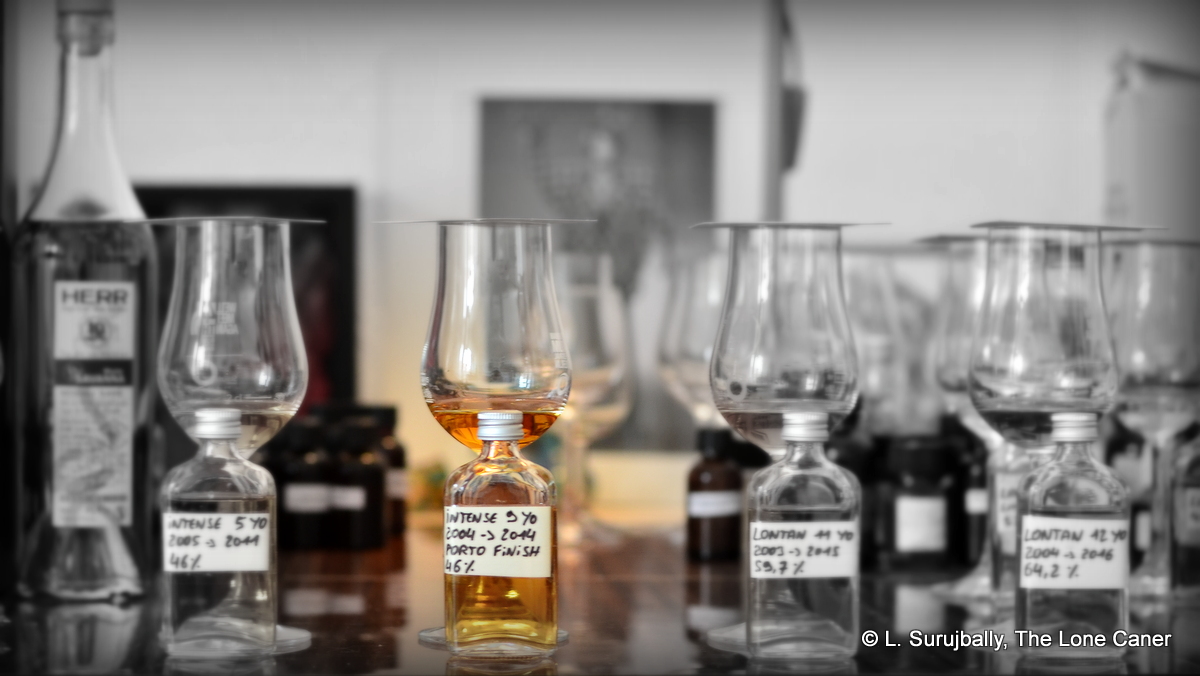
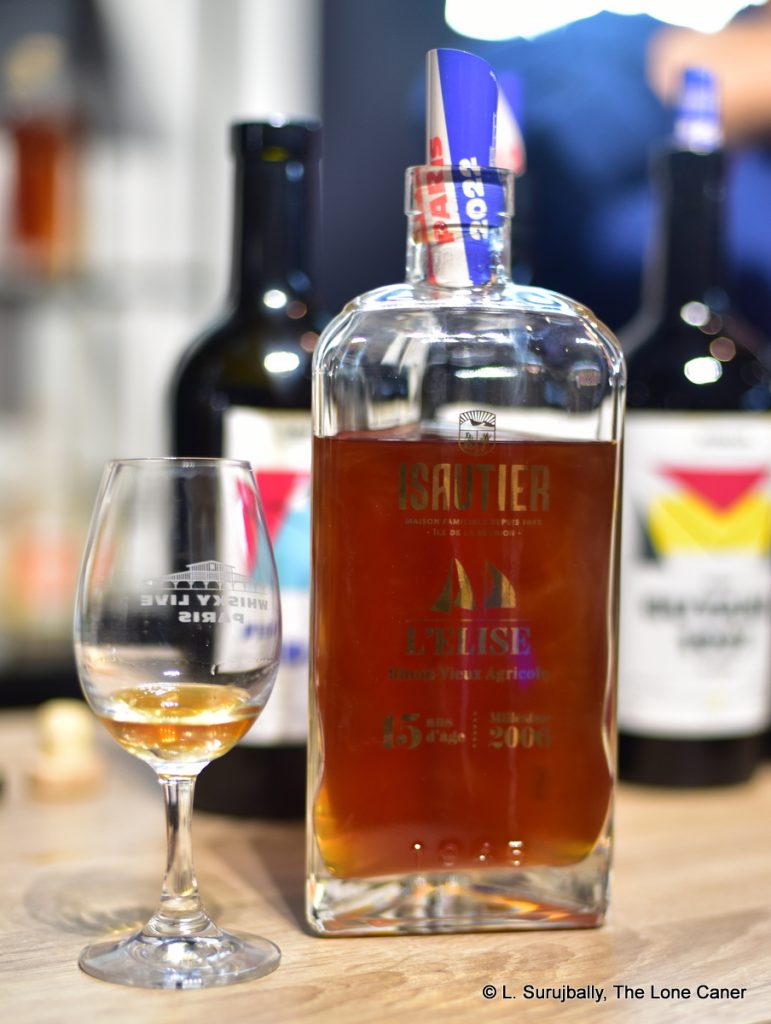
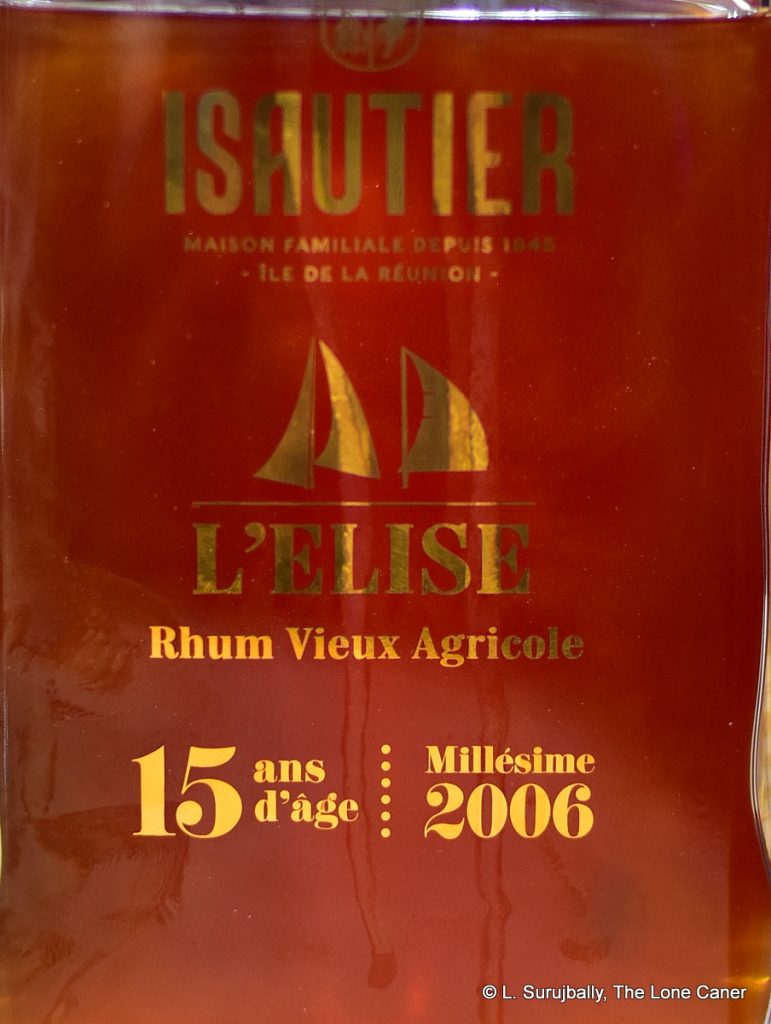
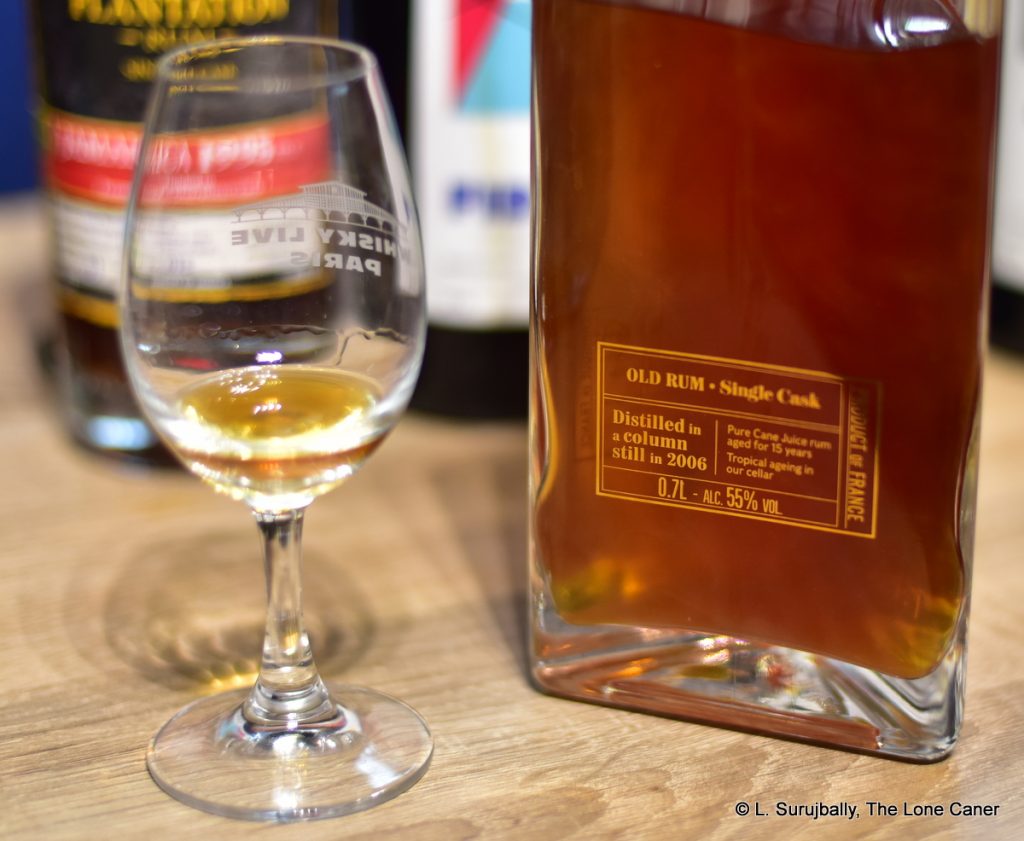
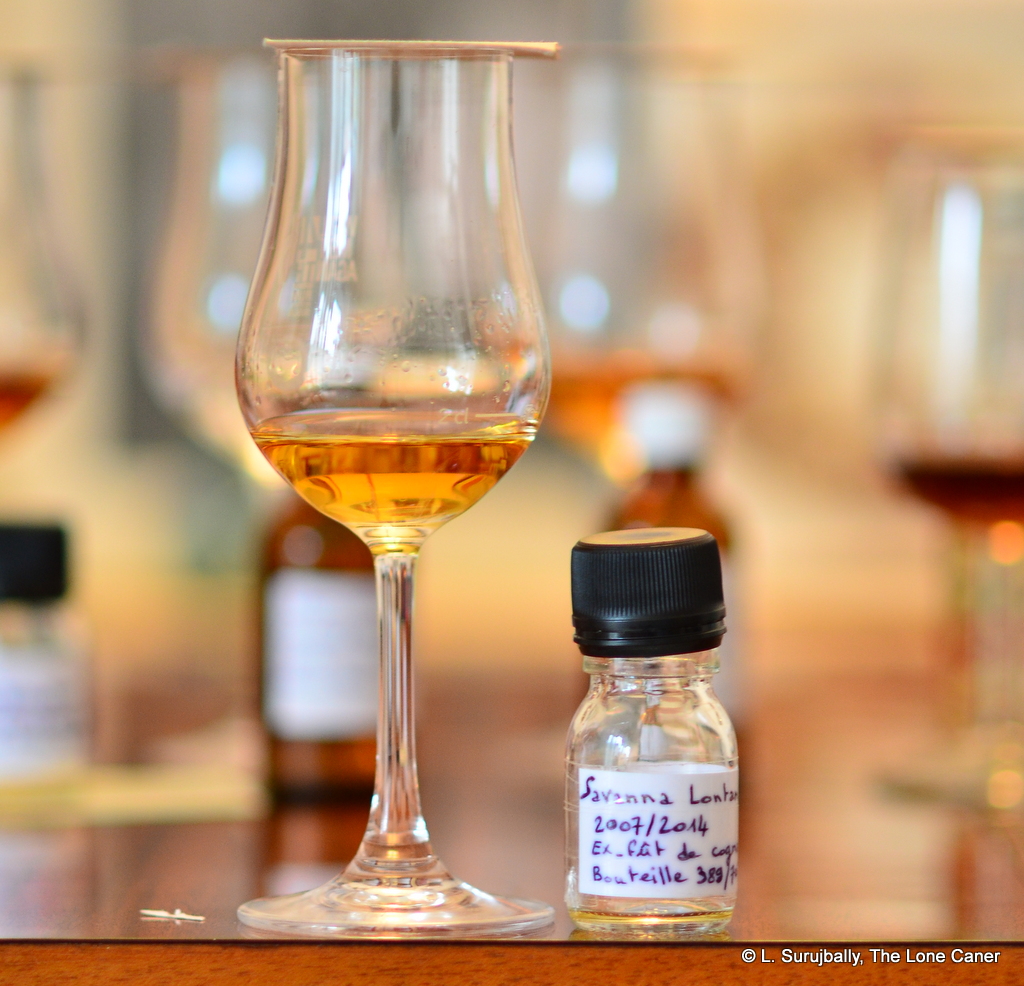
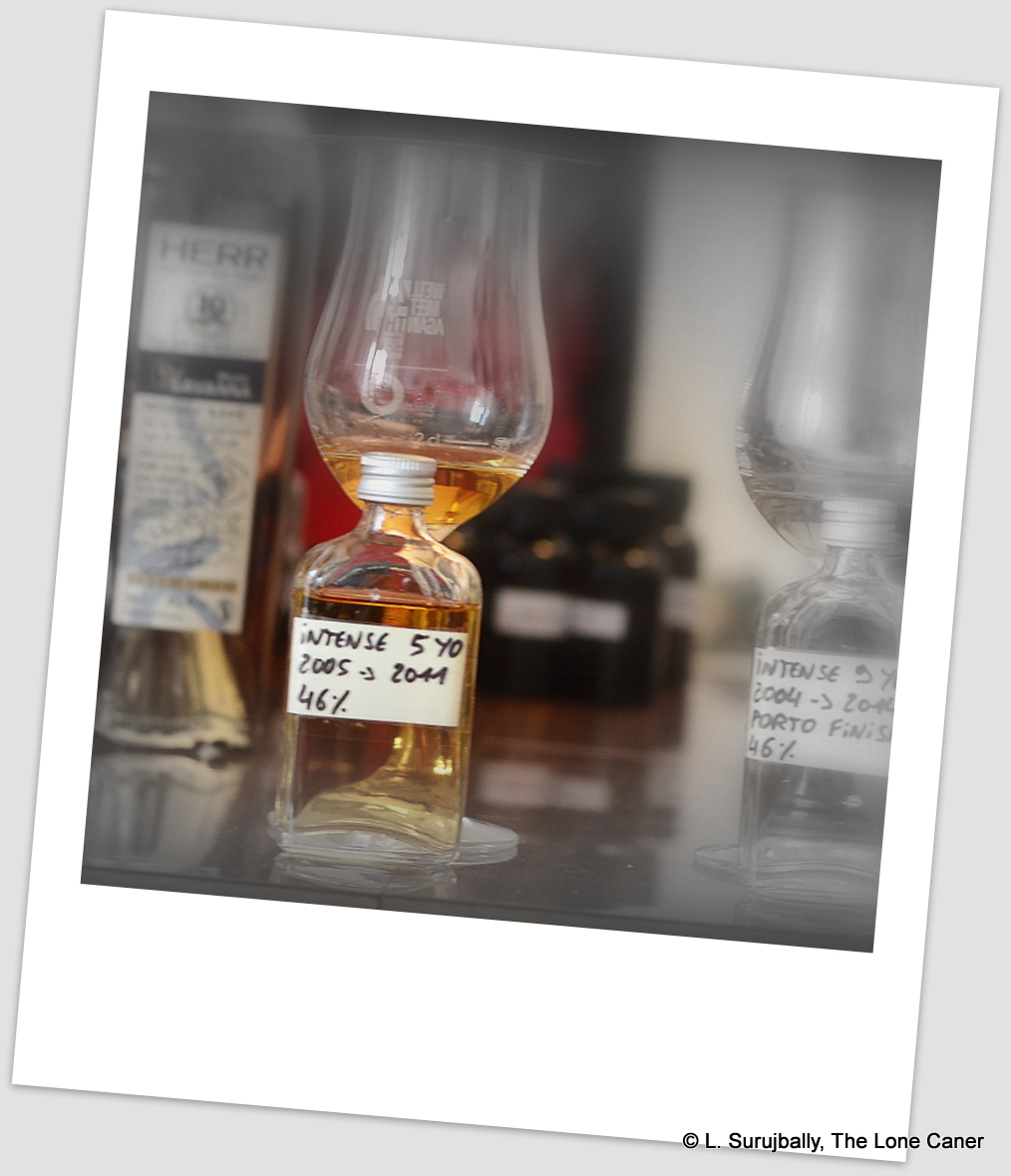
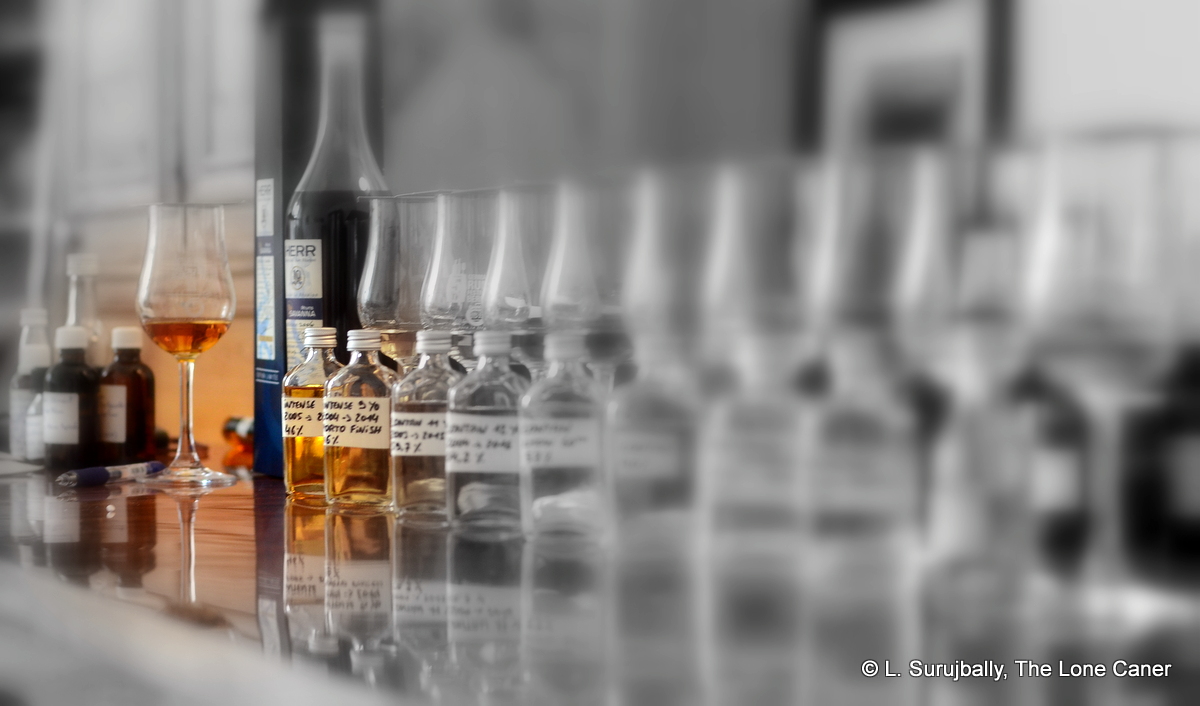
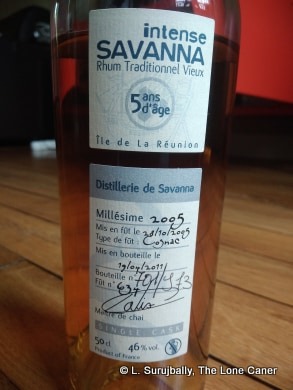 The youth is sensed upon sipping, and it’s an interesting if delicate amalgam. It presents as sharp to begin with, yet the bite climbs back down to gentle very quickly. Some bitter tannins, dampened down before they get a chance to descend into obnoxiousness. Citrus, oranges, nuts, plums, very tart, a bit thin overall to taste…not spotting too much cognac here. Strawberries and pineapples, weak. Nose was better, if not strictly comparable but then, I wasn’t drinking it through my schnozz either. Anyway, good tastes, a little thin, leading to a brisk finish, on the weak side of firm, gone quickly. Tart gooseberries, turmeric, strawberries, some citrus, and a last touch of that honey I enjoyed…it was a nice closing touch.
The youth is sensed upon sipping, and it’s an interesting if delicate amalgam. It presents as sharp to begin with, yet the bite climbs back down to gentle very quickly. Some bitter tannins, dampened down before they get a chance to descend into obnoxiousness. Citrus, oranges, nuts, plums, very tart, a bit thin overall to taste…not spotting too much cognac here. Strawberries and pineapples, weak. Nose was better, if not strictly comparable but then, I wasn’t drinking it through my schnozz either. Anyway, good tastes, a little thin, leading to a brisk finish, on the weak side of firm, gone quickly. Tart gooseberries, turmeric, strawberries, some citrus, and a last touch of that honey I enjoyed…it was a nice closing touch.